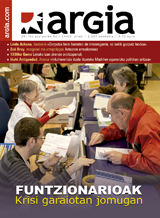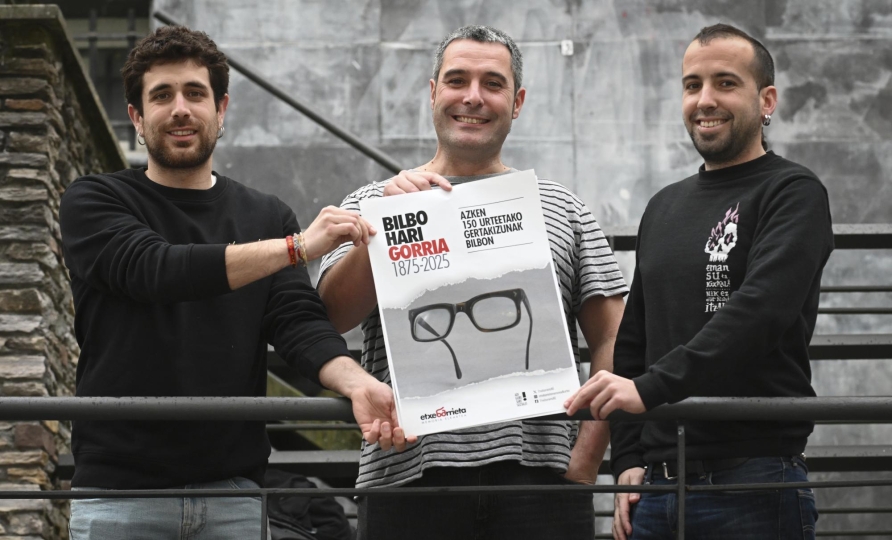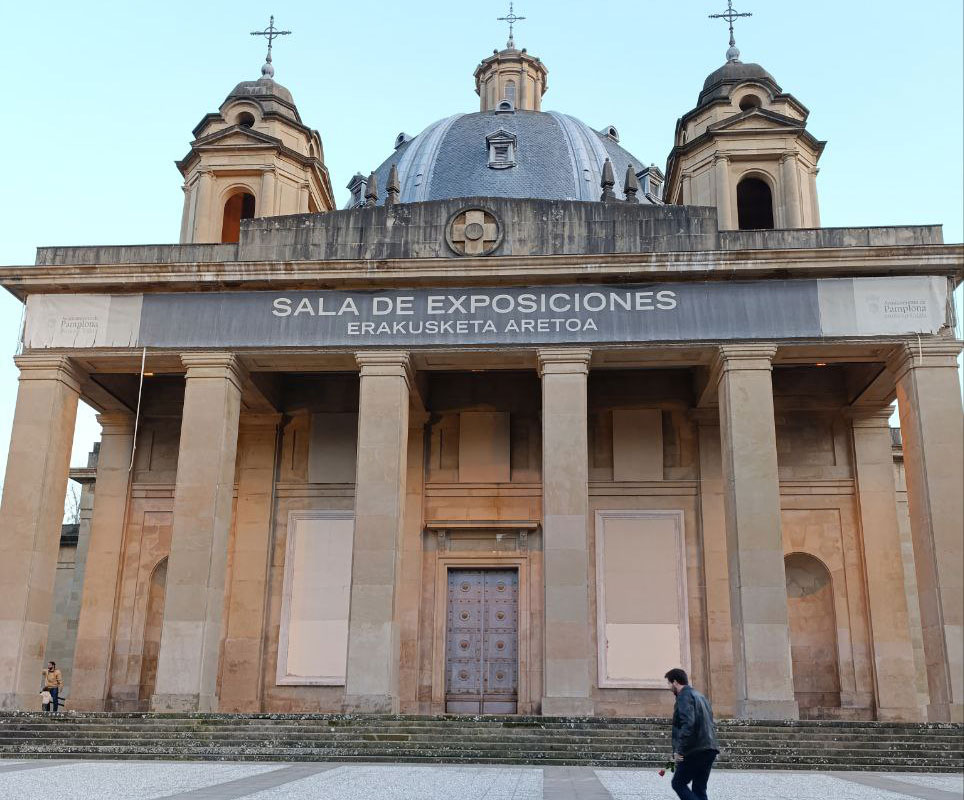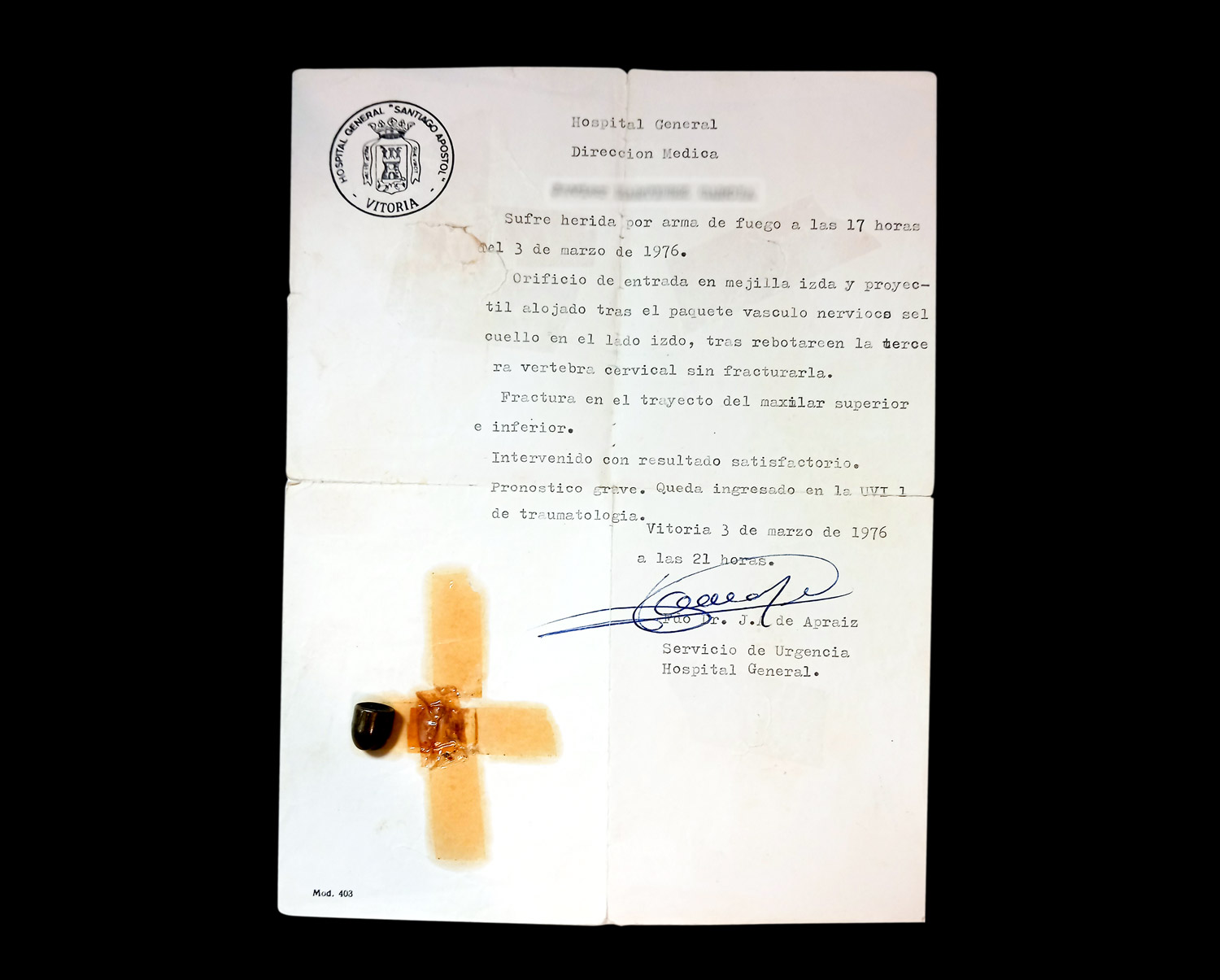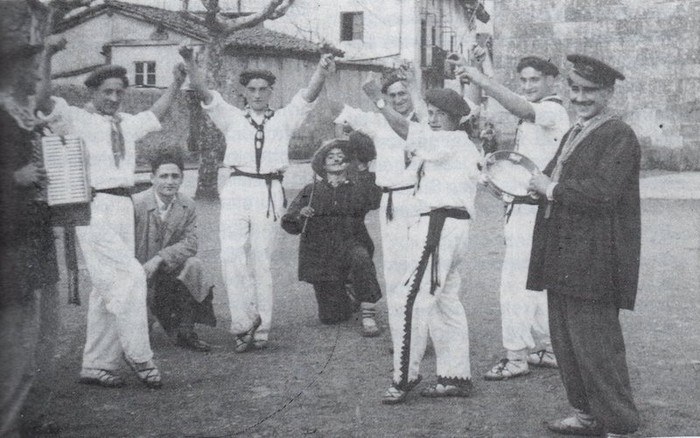Through the memories of the trenches
- The sound of the bombs and the misery of the prison are still very present for the last gudaris and militiamen. The book Maizales in the rain (Alberdania, 2011) reflects the experiences of civil war, post-war, jail, exile, labor battalions, the Francoist army and the military army. From the front line.
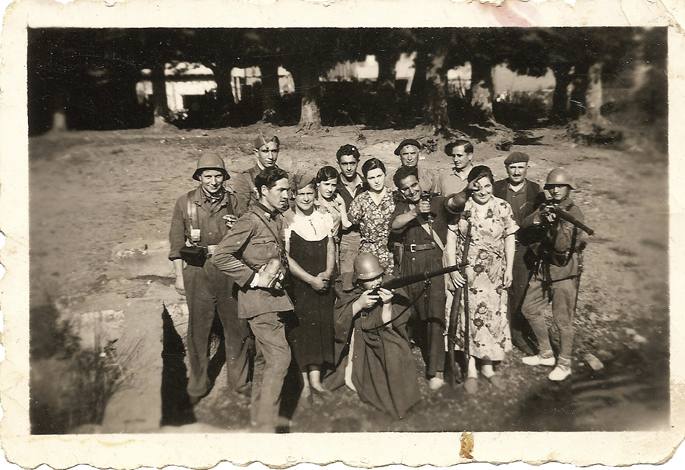
Communist Marcelo Usabiaga will never forget his 21 years of Francoist imprisonment. Not his brother's firing. Nor can he forget the Santurtziarra Miguel Francisco Lafuente, who was forced by the Francoists to fuse his bandmates in the town of Biscay. Nor does the bombing of Gernika. These men over 90 years of age have not entrenched their dignity, and more than ever, they are eager to move to the new generations what happened to the new generations. The book Maizales in the rain contains testimonies of Marcelo and Txij and other men and women. “There are also margins in history books. That is, the voids in white; and now they are filled with content, as we find graves under the earth that we tread,” wrote the professor and president of Aranzadi, Paco Etxeberria, in the preamble.
Anarchists, communists, socialists and nationalists. The protagonists are men and women who, being young, fought for democracy from the very beginning. They are the spokespeople of comrades, of relatives and of a time that they have left behind. Usabiaga, for example, participated in the battle of Irun: “We were called to the Military Directorate of the City Hall, to a meeting. It was seven or eight in the afternoon and the foreman on each side touched a frontal area: ‘Zuri, Usabiaga, Puntza. To the Socialist Party, Saroia; to the Communist Party, Pagogaña…’. ‘Well, what does it consist of?’ ‘Irun’s situation is disappointing. If you do not defend, nobody will. So go and don't go back until the area is safe. If not, die there, defending it.”
It was just the beginning. Marcelo was shot in Peñas de Aia. The war continued and so did he: Bizkaia, Catalonia, Madrid, Cantabria, Asturias… He managed to escape to the North and in 1944 was arrested as a guerrilla going south. He was incarcerated in Ondarreta prison, “in a 24-hour room, secluded, waiting for trial, I was sure I would be smoked. I thought about how I would react to the run-off platoon: I was rehearsing on the wall.” Finally, he was sentenced to 20 years in prison. And it did more than that.
“When I woke up, I didn’t know how long it had been meaningless.”
Matthew Balbuena is one of the last survivors of the July defense in San Sebastian. As a member of a large group, he came from Bilbao to help the Donostiarras republicans: “Once in the street, I lay on the ground to fire better; we tried to take refuge behind some tops. We were under the power of a machine gun, but it was mostly rifles that shot us. It was a blind struggle: despite being 20 meters away, we shot blindly, because it looked very bad.”
Moments of great tension experienced during those days, both in Donostia and Otxandio, but in this case as a result of the Franco bombing on 22 July. The bilbaíno anarchist Félix Padín tells it this way: “‘Throw yourself to the ground! Go to the ground! They're bombs! Bombs!’, they came screaming from the City Hall. And we, of course, were looking at what the plane was casting, because they were shining as they fell.” These flashes, among others, left 57 dead. For example, the anarchist sestaotarra Julia Hermosilla broke the two tympans: “When I woke up, I opened my eyes and didn’t know how long I had been unconscious, because I was bleeding everywhere. The first thing I saw was Telesforo Monzón, saying: You need to get down to the hospital! Dumpster!’
Hermosilla was almost deaf. The war not only caused internal injuries, but also resulted in violent physical injuries. That is the case of the Socialist Luis Mari Azpiri of Eibar, who has been arrested. When he was on the Biscayan front, in a moat, "a canyoning took place in the vicinity and the rocks fell upon us. I was cut off my tibia and fibula. Two more were killed. As the guards couldn’t approach me, my brother picked me up and dragged me away.” Azpiri was saved, but unfortunately, after a week he was in the hospital, when he learned that his brother had been hit by a bullet.
Outside of the Basque Country to the struggle
Many had to leave their homeland behind to fight the insurgents. “We arrived in Asturias in buses and young people screaming: Here they are! Here are the Russians!’ Because they heard us speak in Basque! And because we were uniformed ... All of them in old clothes, unfortunately,” says usurbildarra Manuel Goenaga.
Witnesses have often told the same thing from different places and points of view, the personal stories of war cross and many historical protagonists jump from one story to another. When Gernika was bombed, for example, Txisko Lafuente was present: “That was chaos, you can’t describe it! People running, scared; children on the ground, women crying; people coming in wherever possible, the wounded killing on the ground, bombs falling steadily, houses falling and people shattered. Everything destroyed, everything ‘clean’. That was hell.” On that day Luis Mari Azpiri was heading for Gernika: “In the distance, we saw brilliance. ‘How weird that is.’ And when we got closer, everything was on fire.” The Biscayan nationalist Gudari José Moreno was also there, but a kilometer away: “‘Oiga, what is he smoking?’ was Gernika. There was smoke and the radiance of the houses that were burning.”
All Life Against Franco
Gipuzkoa, Bizkaia, Cantabria, Asturias… They were gradually being dominated by Francoists. This forced the soldiers and militiamen to repent continuously. In the fighting and in flight, many eventually headed north. Julia Hermosilla, for example, along with her husband Ángel Aransaiz, became a passionate entrepreneur in the Basque exile in Baiona. Aguirre, Leizaola, Monzón, Múgica Herzog, Nicolas Redondo (father), Ramón Rubial… They met eleven historical protagonists who worked as Mugalari. Among the actions that were carried out, the preparation of a bad attack on Franco in 1962 stood out, when Julen Madariaga helped them pass the explosives to the South.
The fate of others was more turbid: Matthew Balbuena escaped the snow-capped mountains for about 25 days in search of reaching France. “Walking all night; walking, walking. I had the impression that I was walking through the mouth of a knife, because I felt a chasm next to me. The wind gave me that information. I started to go down, and my heels were completely broken. With the skinned gloves… Suddenly I fell in the ravine.” But finally, near France, Broton, he ended his odyssey. “When I woke up, I noticed in my head the contact of the two rifles. He looked and was the Civil Guard.”
Others, such as José Moreno, were arrested in Santoña: “They came to the port and there were the Italians. We had to leave the guns. And they said to us, ‘Don’t worry! Soon you will go home, because the Basques have behaved you well.”
But thousands of soldiers didn't even walk into the house for many years. As slaves, they were interned in workers’ battalions to rebuild roads and bridges. Some even in the Francoist army. For example, Txisko Lafuente was sentenced to six or seven times in Paterna to his supporters: “I had to name soldiers: you, you and you. It's over. But sometimes there was nobody in the company, no, they were going to fuse. It's normal! And in seven cases I didn’t have anyone to name me, I had to go... obligated!” There are many unfortunate people who have seen: “They had to fusify father and son. The father said to his son, ‘Quiet son, raise your head! Like that! “Stand up!” ‘Point up!’ when they said, they ran to each other, hugged them and smoked them there…”
As if it were not enough, after years of insults and ill-treatment, they were forced to perform military service. “I left my house when I was 17 and returned with 24. All youth. That never gets forgotten, because you've lived it, huh? Forgive, forgive, but forget, no.” And that is that, as José Moreno says, the experiences are rooted in memory, they have not forgotten them, they have not left them behind. They cannot entrench their struggle, today they are still firm. “To fight! We have to be something that motivates us in life. Above all, it is important to have a human goal,” says Mateo Balbuena. José Moreno continually writes letters in the newspapers of Bizkaia. Marcelo Usabiaga and Felix Padín are in charge of delivering the testimonies of the two protagonists of the day. They stay in the front line, clinging to the trenches of their ideas; with their memories as weapons, these old wrestlers continue to shoot from the only front left to them, the memory front.
Kirola eta oroimena uztartuko dituzte, bigarrenez, mendi-martxa baten bitartez. Ez da lehiakorra izanen, helburua beste bat delako. La Fuga izeneko mendi martxak 1938ko sarraskia gogorarazi nahi du. Ezkabako gotorlekuan hasi eta Urepelen amaituko da. Maiatzaren 17an eginen dute.
Fusilamenduak, elektrodoak eta poltsa, hobi komunak, kolpismoa, jazarpena, drogak, Galindo, umiliazioak, gerra zikina, Intxaurrondo, narkotrafikoa, estoldak, hizkuntza inposaketa, Altsasu, inpunitatea… Guardia Zibilaren lorratza iluna da Euskal Herrian, baita Espainiako... [+]
Gogora Institutuak 1936ko Gerrako biktimen inguruan egindako txostenean "erreketeak, falangistak, Kondor Legioko hegazkinlari alemaniar naziak eta faxista italiarrak" ageri direla salatu du Intxorta 1937 elkarteak, eta izen horiek kentzeko eskatu du. Maria Jesus San Jose... [+]
Familiak eskatu bezala, aurten Angel oroitzeko ekitaldia lore-eskaintza txiki bat izan da, Martin Azpilikueta kalean oroitarazten duen plakaren ondoan. 21 urte geroago, Angel jada biktima-estatus ofizialarekin gogoratzen dute.
Bilbo Hari Gorria dinamikarekin ekarriko ditu gurera azken 150 urteetako Bilboko efemerideak Etxebarrieta Memoria Elkarteak. Iker Egiraun kideak xehetasunak eskaini dizkigu.
33/2013 Foru Legeari Xedapen gehigarri bat gehitu zaio datozen aldaketak gauzatu ahal izateko, eta horren bidez ahalbidetzen da “erregimen frankistaren garaipenaren gorespenezkoak gertatzen diren zati sinbolikoak erretiratzea eta kupularen barnealdeko margolanak... [+]
1976ko martxoaren 3an, Gasteizen, Poliziak ehunka tiro egin zituen asanbladan bildutako jendetzaren aurka, zabalduz eta erradikalizatuz zihoan greba mugimendua odoletan ito nahian. Bost langile hil zituzten, baina “egun hartan hildakoak gehiago ez izatea ia miraria... [+]
Memoria eta Bizikidetzako, Kanpo Ekintzako eta Euskarako Departamentuko Memoriaren Nafarroako Institutuak "Maistrak eta maisu errepresaliatuak Nafarroan (1936-1976)" hezkuntza-webgunea aurkeztu du.









